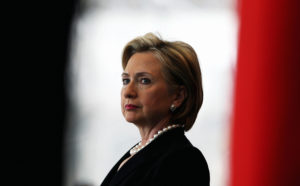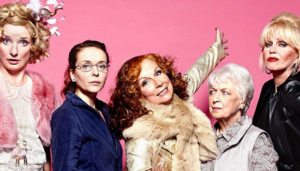At the beginning of the year, a scandal erupted over a TikTok trend of young women in tight clothes posting videos shaming men for hitting on them at the gym. As recently as 2018, the story would have been one of women using social media to reclaim public space; the shapely posters would have been commended for their advocacy. But vibes do shift, and now the question is: are the women posting about gross men leering at them actually seeking attention? Are they looking for affirmation of their own hotness — or, in concrete terms, success as social media influencers? Even some who were not angry at the TikTokers from a men’s-rights perspective were sceptical that they were doing a service to womankind.
The #MeToo era was, among other things, a peak moment for what I have called photogenic feminism: a feminism focused on the plight of the young, gorgeous and ceaselessly hassled. While any women’s rights movement needs to concern itself with assaults in the lingerie-modelling audition room, a movement solely interested in stories that just happen to titillate broader audiences can feel limited at best — and at worst, counterproductive. What about all the unsexy issues affecting women: motherhood, menopause, mid-life crises?
Behold, a new book about ladies who have reached the top of the hill and kept going. Hags is Victoria Smith’s alternative to what she calls “non-confrontational, smooth-skinned, pre-menopausal feminism”. It is an alternative, too, to the witchy feminism peddled by writers such as Sharon Blackie, who last year released the similarly-named Hagitude. Where Blackie speaks of “energies” and “journeys”, Smith is decidedly unromantic. Getting older does not automatically bring women into a cosy sisterhood, she argues, but rather highlights disparities when it comes to wealth or care work. She’s not interested in harnessing mysticism, or recycling “you go, girl” platitudes, or supporting the (unconvincing) argument that older women don’t care what people think about them.
Instead, she comes out in defence of Mumsnet, and, more generally, of women who’ve aged out of peak hotness continuing to exist in society. Smith’s hag feminism is about speaking up even when no one is looking at you. It’s about using the wisdom that comes from years of life on this planet as a woman, rather than demurely agreeing to fade into the background. It’s a break from photogenic feminism, with its intense interest in the experiences of the most visible women. But it is also different from the woo-woo world of witchy feminism, with its coven-chic and its inspirational t-shirts.
Smith offers up a thorough survey, backed up by evidence, of the ways women past a certain age become villains. They are “Karens”, demanding to speak with the manager, and sporting the wrong haircut. They are “Terfs”, speaking of female biology rather than gender identity, and, quite possibly, sporting the wrong haircut. Smith writes: “Once upon a time getting a bad haircut might just have meant having to purchase a fetching hat; now a woman might find herself having to record and distribute a public statement claiming a rare mismatch between politics and frumpy appearance.” Throughout the book, Smith is very, very funny. But she’s making a serious point, all the same, about the way that women past a certain age are not merely ignored, but treated as all-purpose antagonists, their flawed faces signs of outdated politics. Not bad guys, but bad gals with the occasional unplucked chin hair.
Bear in mind that Smith isn’t writing about old women. The middle-aged are her focus, not the elderly. But for women, old can start young. I remember being madame’d in Paris at 27 and knowing that this marked the end of something. Stephanie Cole was hired at 48 to play a firebrand pensioner — in Nineties sitcom Waiting for God — while Graham Crowden, the actor who played her love interest, was 19 years her senior, and therefore the same age as the character he was playing. I am not, to be clear, offended that an actor was cast as a character whose biography doesn’t match their own, but rather am struck by how readily the viewer accepts Cole as an old lady. It seems that 49 and 79 are, in a woman, the same deal: all part of an undifferentiated life stage called “past it”.
I say “are” but should really have used the past tense. One of Smith’s most interesting points is that nowadays our ability to look young into old age means that looking — and even feeling — one’s actual age reads as a choice. Where once it was only celebrities like Barbra Streisand who were commended for things like choosing to “keep” her nose, today — with hormone replacement therapy and anti-wrinkle injections — any 49-year-old women can choose to look like a 29-year-old. People who are middle-aged these days, unlike in previous eras, don’t look it unless they nobly eschew cosmetic measures — or cannot afford them. As Smith writes: “When Sex and the City was rebooted for the 2020s as And Just Like That… much was made of the fact that the now middle-aged characters were older than those in the first season of Eighties sitcom The Golden Girls yet looked much younger.” A trip to the hair salon and a good 10 hours a week at the gym and you, too, could be a “glammie”. This makes looking young forever seem both plausible and — due to such dull factors as time and finances — frustratingly out-of-reach.
Add to this the handwringing over whether a good feminist should love her hard-won wrinkles, or, conversely, do what she can to mitigate visible signs of ageing, so as to stay viable in the sexist and ageist workforce. It can feel as though it went from being anti-feminist to wear lipstick, to being a feminist imperative to look as you did 20 years prior. This new order has been sold to older women as empowerment. Visibly ageing is no longer seen as going the natural (or frugal, or low-maintenance) route; it is seen as conforming to negative, outdated stereotypes about what an older woman looks like. As Smith writes: “it is easier to justify lookism — and the attendant moral judgments — if you can convince yourself that looking like a middle-aged woman is a genuine choice.”
The crux of the problem for Smith is that she’s pleading with an unyielding audience: younger women who’ve internalised society’s ageist misogyny, and who have convinced themselves that older women are those other ladies, and not themselves in a few years’ time. “Hawking a non-ageist feminism is like hawking life insurance to people who’ve been promised eternal life.” Smith presents herself as a recovering Cool Girl, a woman who reviled older women in her own youth, only to realise how wrong she’d been. This is partly an age-old, gender-neutral question of young people deeming their elders dorky and out-of-touch, but is also a specific issue in feminism, where younger women view older ones as avatars of a retrograde past that they are, or want to be, well rid of. It’s not clear to me that any cohort of young women will ever feel differently, but it’s also unclear that Smith anticipates that outcome. Given how much of a young woman’s power often derives from her youth, it seems unlikely that a cross-generational solidarity is imminent.
There are others to whom Hags might not get through. It is not going to reach, for instance, an audience of people who think that, actually, it’s men these days who have it worse, that it’s boys who are really suffering. And that’s fine, lots of people can be right about different things that seem to contradict one another but maybe do not. Which gets us to that other thing. You know the one. The real audience Hags stands to alienate will be those who have correctly assessed which team Smith is on when it comes to the only feminist issue anyone seems to care about these days: trans stuff. She’s with J.K. Rowling and not Owen Jones.
Most of Hags isn’t even about gender identity, but all books about women and girls are obliged to take a side these days. I find this unfortunate. Surely both sides agree that the vast majority of violence against women comes from male-identified men, and not from men claiming womanhood to sneak into women’s spaces? Surely they agree, too, that the vast majority of violence against trans women comes from men, and not from middle-aged ladies who roll their eyes at the expression, “people who menstruate”? Wouldn’t it be simpler, more accurate, and better for women if feminism reminded itself frequently of these facts?
But the “Terf” label is as much about age as actual ideology, and “Terfdom” can serve as a pretext to label older women generally irrelevant yet potentially dangerous to listen to. Smith is onto something when she mentions the refrain, which I’ve also seen circulating, about how trans women look more like women than “Terfs” do. This is meant as a pro-trans rallying cry, equating beauty with goodness, and implying that gender-critical feminists are all sitting around wishing they looked like Barbie dolls, as though their non-resemblance to them were not intentional. What it winds up doing is defining true womanhood, cis or trans, as, to use Smith’s phrase, “femininity-fertility-fuckability”.
Photogenic feminism wavers between insisting that it’s empowering to devote your resources to looking like a pin-up, and decrying the objectification faced by those with hourglass physiques. Hag feminism, meanwhile, is not, as one might suspect, about the right to be seen as young and gorgeous when one is very likely neither of these things. (If you’re expecting Hags to be about the importance of putting ordinary-looking 50-year-old women on the cover of Vogue, you’ve got the wrong book.) It simply skips that focus in favour of the right to be respected and understood as having an inner life regardless of whether the typical man wants to sleep with you, or whether the typical woman hates herself for not resembling you physically.
Old-lady feminism, then, has plenty to offer young women. It might even benefit them at least as much as their seniors. It is, after all, young women who tend to experience the most severe angst regarding their appearances. This is easy to forget once you reach the Botox pros and cons life stage yourself, when it can feel as if virtually anyone younger than you is gorgeous and has nothing to complain about physically. But if anything, it’s the young women posting hot gym videos of themselves on TikTok — the same generation of women forming strong opinions about their “buccal fat” — who might stand to benefit the most from a feminism whose focus shifted towards women’s self-actualisation and away from an exhausting analysis of what men see when they look at us. What hags lack in collagen, they — we? — more than make up for in their ability to just get on with it.
Disclaimer
Some of the posts we share are controversial and we do not necessarily agree with them in the whole extend. Sometimes we agree with the content or part of it but we do not agree with the narration or language. Nevertheless we find them somehow interesting, valuable and/or informative or we share them, because we strongly believe in freedom of speech, free press and journalism. We strongly encourage you to have a critical approach to all the content, do your own research and analysis to build your own opinion.
We would be glad to have your feedback.
Source: UnHerd Read the original article here: https://unherd.com/




